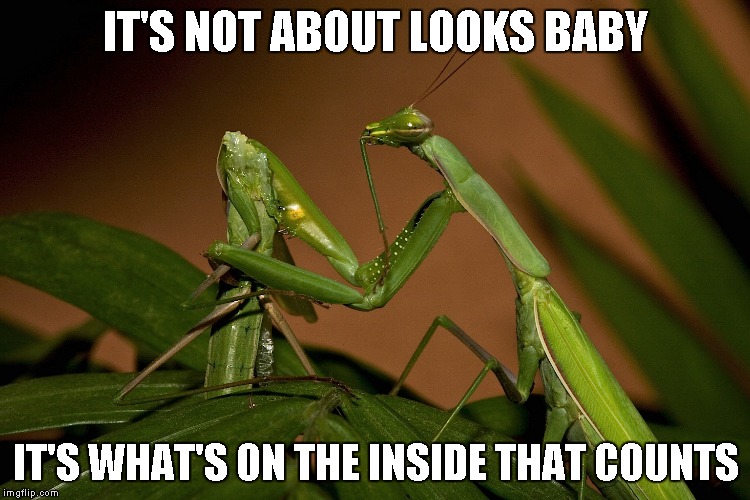Table of Contents
Group 1
Sexual cannibalism on Praying Mantids
Wiki site of the practical exercise of the VII Southern-Summer School on Mathematical Biology.
Here you will find the exercise assignment and the group's products.
If you are a group member login to edit this page, create new pages from it, and upload files.
Introduction
Sexual cannibalism is the predation of a prospective mate either before, during or after mating (Lawrence, 1992).
Sexual cannibalism occurs in many arthropods, but the most popular cases are among praying mantids. Here you can find a video of sexual cannibalism by praying mantids.
Some works have suggested adaptive explanations for sexual cannibalism, from both the female and male perspectives. Females that cannibalize their mates may gain nutrients enabling them to increase the size and rate of eggs production. For males, sexual cannibalism may be an adaptive reproductive strategy when the chances of fertilizing more than one female are low and the nutrients gained by the female increase the number and/or quality of the eggs that the male has fertilized.
Assignment
Propose and analyze a mathematical model to describe the dynamics of different behavioral strategies concerning sexual canibalism in female and/or male mantids. Your model should take into account that females can engage in sexual canibalism, and/or that males can react to canibalistic females (e.g. avoiding them).
Questions & Suggestions
Two basic questions are (i) if/how alternative behaviors can coexist in the same population and (ii) how sexual canibalism affects the population dynamics. Although seemingly straightfoward, these questions can lead to very complicated models. To keep it simple, you can start by evaluating the invasibility of an homogeneous population by an alternative strategy (that is: does a small population of invasors grow?). For instance:
- Will a population with only non-canibalistic females be invasible by canibalistic females?
- Will a population with only males that do not avoid canibalistic females be invasible by males that have some avoiding behavior?
- What about the opposite cases?
Further well-grounded insights to feasible models are very welcome.
References
- Lawrence, S. E. “Sexual cannibalism in the praying mantid, Mantis religiosa: a field study.” Animal Behaviour 43.4 (1992): 569-583.http://www.sciencedirect.com/science/article/pii/S0003347205810176
- Barry, Katherine L., Gregory I. Holwell, and Marie E. Herberstein. “Female praying mantids use sexual cannibalism as a foraging strategy to increase fecundity.” Behavioral Ecology 19.4 (2008): 710-715.https://academic.oup.com/beheco/article/19/4/710/201821
15/01/18
Initial Brainstorm:
- We need to model the strategies of the population
- Graph on the temporal evolution of frequencies
- If cannibalistic can invade non-cannibalistic, and vice-versa, than both strategies can exist
- Two different strategies can coexist, and in this kind of systems they were reported to coexist, but there is no apparent reason why would this happen in this situation
- What determines if a strategy can invade the other is just the beginning of the strategy
- [Rebouças] We probably need 3 DOEs (male, female-1, female-2 or male-1, male-2, female). And a model for each kind of question (2 models)
- [Pollo] Fitness can be situation-dependent
- [Rebouças] Fitness doesn't need to be explicit in the model, but can be derived from it
